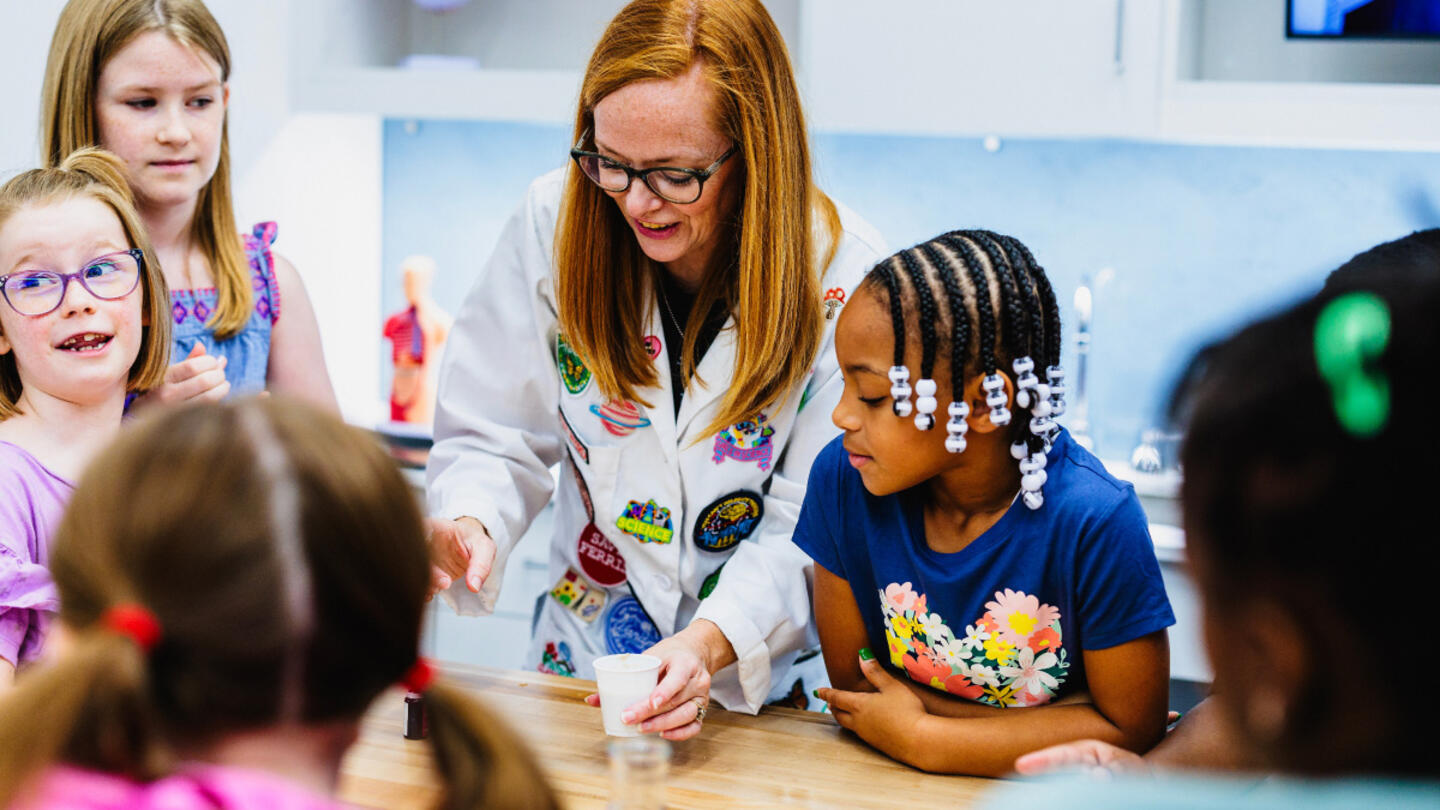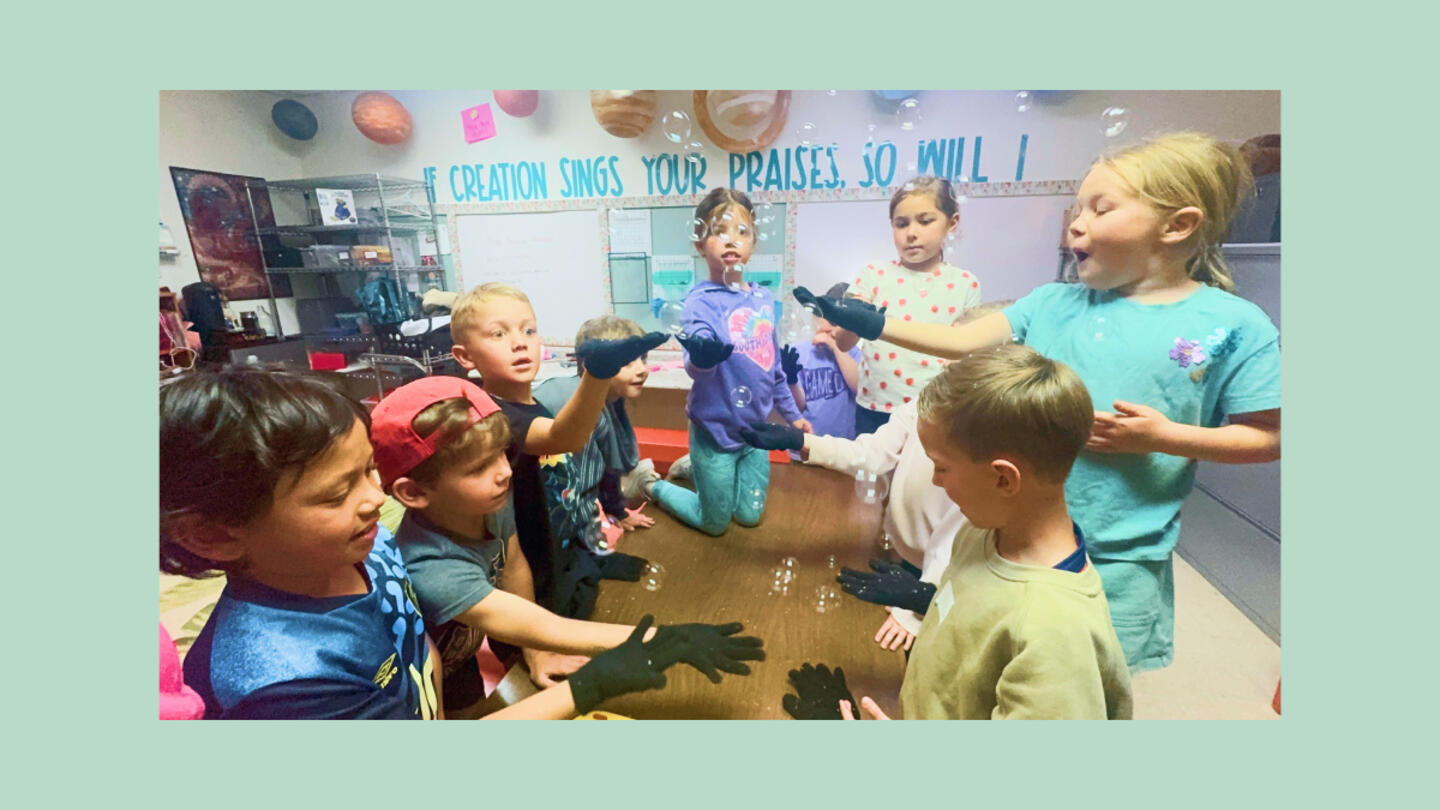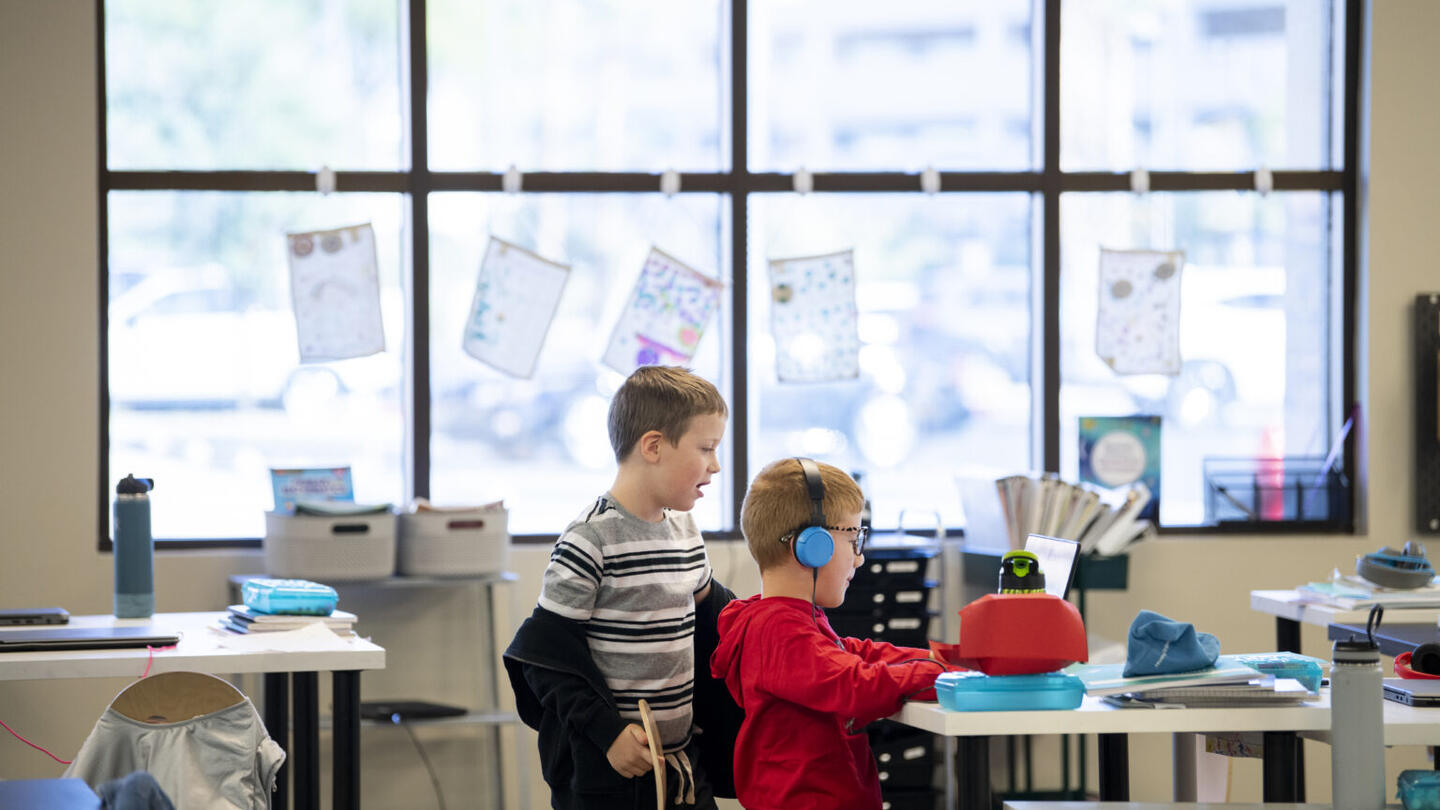In today’s rapidly evolving world, education is serving an entirely new set of experiences and working toward new goals. The reasons our parents — and grandparents — attended school no longer match what today’s students need from education. It’s time for a fundamental shift in how and why we learn.
To meet this changing landscape, a variety of new innovations are emerging to meet the needs of learners. There’s growing awareness that traditional education models only serve the unique skills and interests of a select few and that the average curriculum doesn’t prepare students for the challenges they’ll face in the real world.
These educators are exploring new approaches to teaching, learning, and achievement. From incorporating practical skills to introducing student-led learning plans and flexible models, these changemakers are shifting the goal away from grades and looking instead to equipping students with critical thinking, problem-solving, and collaboration skills.
In doing so, they’re not just preparing the younger generation for success inside the classroom: They’re helping them explore their unique talents, gifts, and interests, and shaping them to make waves in their own communities for years to come.
How do we create innovation in education?
“Education” itself is a multi-layered term, so thinking about how to improve it can encompass any new ideas, methods, and technologies that enhance the learning experience and improve education outcomes. Although this might be dauntingly broad, it can also be encouraging: As many ways as there are to define learning, there are an equally wide range of ways to improve and grow the field.
This can include everything from new teaching techniques and curriculum design to digital tools and online resources. The ultimate goal of innovation in education is to make learning more individualized, engaging, and effective for students at all levels. By embracing innovation in education, educators can create more dynamic and effective learning environments that help students develop the knowledge, skills, and competencies they need to succeed in today’s rapidly changing world.
This became clear last year when the think tank Populace released its Purpose of Education Index, outlining just how varied Americans’ goals for K-12 education are.
“Generally, Americans do not care if all students study the same thing compared to them getting to choose courses based on their individual interests,” the study found. “Data clearly illustrates that individualized and tailored approaches that recognize students’ unique needs are preferred.”
The need for innovation in education
Most traditional K-12 education models are one-size-fits-all — but they fail to meet the diverse needs of all learners.
Not every student thrives by using memorization or rote learning. Those who don’t can be left behind or become disengaged and hindered from unlocking their full potential.
So what’s the solution? It starts with more personalization and support in the classroom. Increasingly, educators are focusing on creating opportunities to:
- Help students prepare for the changing needs of the global job market
- Foster creativity and critical thinking skills
- Encourage collaboration and problem-solving abilities
- Cater to the unique interests and learning methods of each student
For instance, at One Stone School in Boise, Idaho, each student is empowered to design a curriculum that works best for their learning styles and addresses their individual interests and goals. Educators guide them as they create flexible, personalized learning plans based on their unique gifts, allowing them to more productively explore their passions and develop essential skills for future success. Or, as One Stone Co-Founder Teresa Poppen said, “How do we connect what we do every day to the real world?”
It’s working. By embracing innovation in education, schools like One Stone are creating more inclusive and engaging learning environments that prepare students to thrive in the modern world, personally as well as professionally.
Funding innovation to transform education
Innovation needs funding. But there’s a catch: To receive funding, entrepreneurs usually need to show proof of concept — that their idea works.
That can be tricky for education entrepreneurs who want to think outside of the box. In the United States, the trusted old models receive funding from legislators because they use old measures and assessments to decide “what works” in traditional models. But it’s exactly those old models and measures that need to be transformed.
One organization driving innovation forward in education is VELA. This nonprofit has flipped the script from handing large amounts of money to a select few individuals to offering millions of dollars in small grants to thousands of everyday entrepreneurs. This model generates new approaches to education in founders’ communities. These creatives share a self-starting spirit, a desire to meet the needs of the learners and families they serve, and a willingness to stretch the canvas on the “where, how, and when” of school.
VELA’s model is unique because it instills trust and encourages autonomy in these educators, believing that those closest to the problem should be designing its solutions. Unlike other grants, VELA doesn’t require as much proof of concept ahead of investment, allowing for funding to drive the outcomes — not the other way around.
By giving out smaller grants to a larger pool of applicants, it is able to fund a more diverse array of ideas, experiences, and types of education institutions. These smaller grants also allow recipients to take more risks and get more creative.
“We limit our potential when we limit the people who have access to opportunities, to drive social change,” said Meredith Olson, president of VELA. “A few thousand dollars to the right person can fuel innovation to a scale we never expected was imaginable.”
So far, VELA has given out more than $35 million in grants to nearly 2,500 recipients — including microschool founders, homeschool leaders, and many others — who are serving more than 5 million students nationwide. The organization’s continued support sends a strong message to other education funders: Trust that families and educators know how to support their learners best, and empower them with opportunities to do so.
Sign up for Stand Together's K-12 newsletter and get stories, ideas, and advice from changemakers who are transforming education across the country.
Building community around new ways of learning
Education is about much more than memorizing facts. It’s about pairing knowledge with the curiosity, confidence, and opportunity to apply that knowledge to benefit our communities.
That’s why many organizations that are venturing into new education territory make community and collaboration a key ingredient in their planning. For instance, Electric Girls is a program that empowers young women to pursue STEM subjects by providing hands-on learning experiences — but that’s only half of the equation.
The nonprofit pairs this learning with mentorship and a supportive community to ensure participants gain more than technical skills. Students are also building confidence and self-reliance, which ensures they are set up for success on the long road ahead.
“We have the right to self-actualize,” said Founder Flor Serna. “And if there’s a barrier to that, there’s a way around that barrier.”
The program is creating an environment where curiosity is accepted, where new approaches are welcomed, and where there’s a willingness to experiment and get better. It all starts with showing one young woman the way forward.
The larger impact of education innovations
New advances in education don’t just affect students: They also have the potential to transform the lives of educators and their families.
Recognizing this, some education organizations are making innovation a family affair. Love Your School is dedicated to helping families find the best education for their children by connecting them with a wide range of nontraditional education models, from homeschools to microschools to learning pods. By helping parents know their options, Love Your School empowers families to pursue the education journey they know will best suit their child.
The nonprofit provides personalized support to families seeking alternative education options via a “Parent-Concierge” service. Experts in various areas, such as special education, homeschool transitions, and scholarship applications, work closely with families to guide them in finding the right education path for their children. This one-on-one support empowers parents to make informed decisions about their children’s education and advocate for their unique needs.
“We really pride ourselves in providing expert advice and advocacy to parents,” said Founder Jenny Clark. “That means that a lot of parents are calling us and saying, ‘Hey, our kid is struggling, and I don’t even know where to start.’ We’re able to walk them through that process, listen to their story, and provide personalized support, which I think is necessary and lacking in the school choice world.”
Similarly, the Arizona Empowerment Scholarship Account program helps families access a broader range of education options by providing funding tailored to their specific needs. Families can use these scholarships to access, for instance, specialized curricula, therapies, or supportive technologies that help students overcome challenges and thrive in their learning environment.
By opening up the gates to what kind of education is available to them, these programs give families the tools they need to discover their hopes for their children’s education and pursue the most fulfilling experience possible.
“What ESA programs offer is a real opportunity to shift from the one-size-fits-all school-based delivery model to a system of an ever-expanding set of options that can make educational pluralism a reality,” said Robert Enlow, CEO of ESA advocate EdChoice.
Building relationships and fostering community
For innovators trying to make a change, leaning on others can only help, not hinder, their growth. It might be tempting to go it alone, but taking advantage of the support and engagement of the surrounding community can maximize impact.
Many education leaders, including those at the National Microschooling Center, are harnessing the untapped power of community to level up the learning opportunities they offer. They focus on building relationships between families, students, and other educators, aiming to create a larger network of people who can support and learn from one another as they explore new education paths.
Education innovators were once largely on their own if they wanted to found a microschool. Now they can access insights and support from others on the same path. That may be the difference between starting a school and starting a movement.
“It’s about what this particular founder in this particular jurisdiction or state needs to help them reach their full potential,” said Ashley Soifer, co-founder of the National Microschooling Center. “It’s about interacting with microschool founders or potential founders that are just at the start of their journey saying, “Hey, this is interesting to me, and I think I want to do it, but I definitely need some help.’”
The importance of choice in education
One theme that’s evident in all of these new ideas? Choice.
Whether developing a new type of curriculum, designing a hybrid model of learning, or offering funding in creative ways, the bottom line is that families and educators need more options.
That doesn’t mean traditional education models are always the wrong fit — they could be the right choice for many students. The important thing is that families and educators can examine their students’ unique experiences, needs, strengths, and goals, and find a model that suits them best.
This doesn’t always mean choosing between one or the other. In many cases, students may find their personal trajectory includes a combination of learning styles and options.
At Farmhouse Phonics, educator Jessica Ramsay empowers families to mix and match learning programs that work best for their children, without overhauling their existing school setup. By offering one-on-one, flexible afterschool education, she ensures that families don’t have to choose between public or private, group or individual, hands-on or reading-based, or any other combination.
“Every classroom teacher is just doing the very best they can,” Ramsay said. “It is so hard to meet every need of every learner within your classroom by yourself. It’s almost impossible. Sometimes what is best for the kid is being able to work with someone else.”
Prioritizing practical skills and individualization
The Purpose of Education Index found college preparation isn’t necessarily the end goal of education anymore. The horizon is expanding, and many families and educators are increasingly placing as much value on practical skills that will prepare students for life after graduation.
Respondents to the Purpose of Education Index largely prioritized critical thinking, financial management, and other practical skills when asked what they hoped students would get out of their education.
“It’s not clear that that value is there from college anymore,” said Todd Rose, CEO of Populace. “So then when you pile on the outrageous cost … and the debt you’re incurring, it’s just not true. The value proposition isn’t there anymore.”
Embracing a future of learner-first education
All of these educators make it clear: Whatever education path a family chooses, the student will be at the center.
Whether it’s a flexible curriculum, learning practical skills, or developing a community, these innovations reflect a new vision for education, one in which students are empowered to explore their talents and pursue their goals.
The future of education lies in embracing innovation and providing a diverse array of options for learners. By fostering a culture of acceptance, collaboration, and experimentation, we can unlock the full potential of every student, preparing them for success in the 21st century.
“I think the takeaway is: The American public wants ‘different,’ not just ‘better’ from education,” said Rose. “It’s pretty clear that there’s a different set of outcomes that they are expecting.”
***
Learn more about Stand Together’s education efforts and explore ways you can partner with us.

This colearning space has the potential to bridge the divide between public and private education.

New Johns Hopkins data shows homeschooling’s recent surge has transformed the education landscape.
Step 1: Find the best learning environment for your child. Step 2? Figure out how to pay for it.

Here’s what happens when AI replaces teachers.
